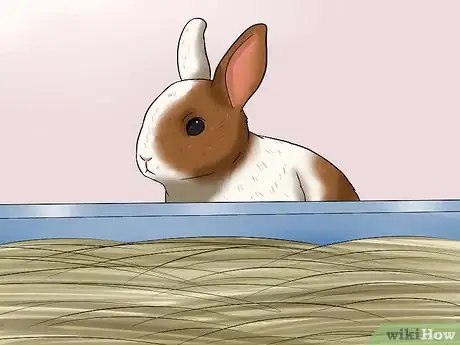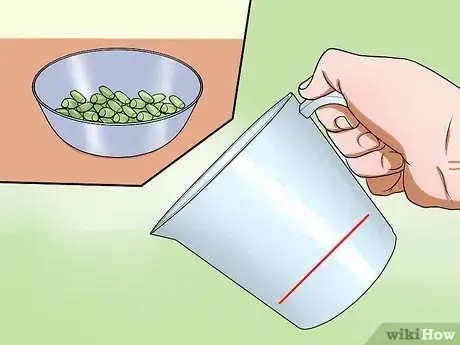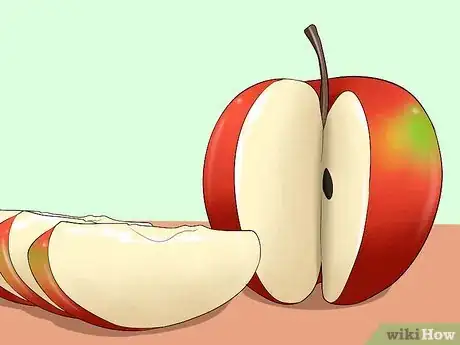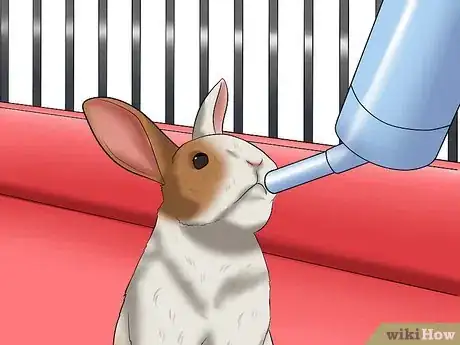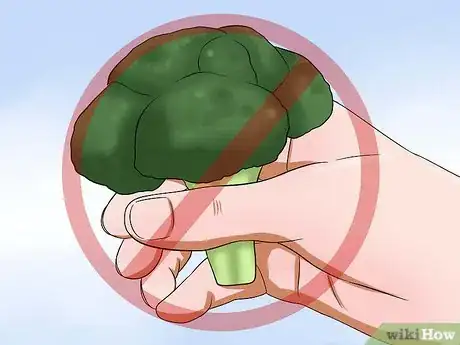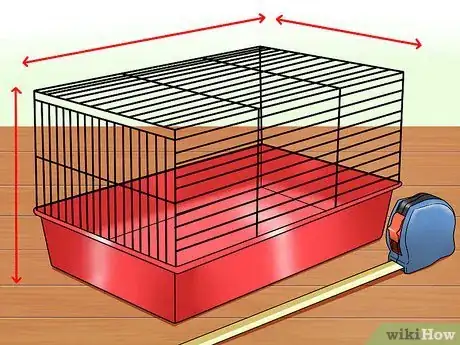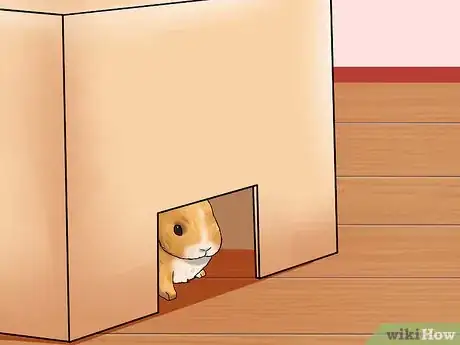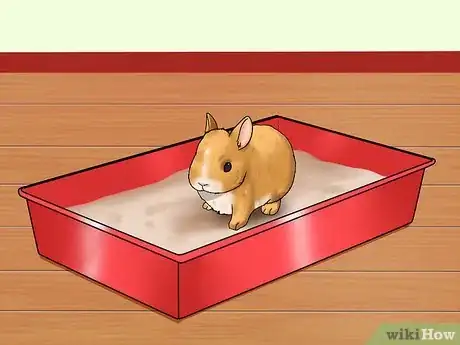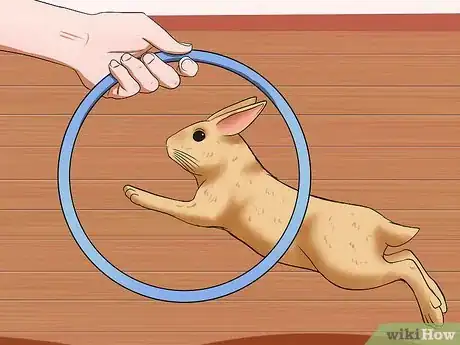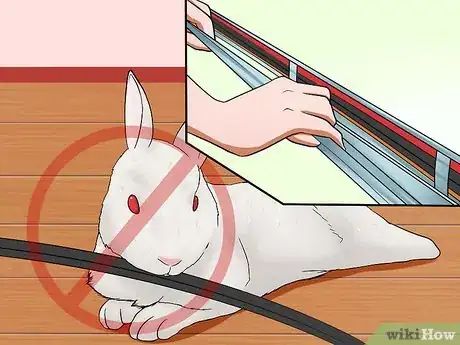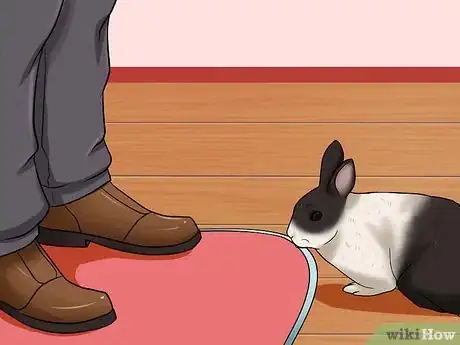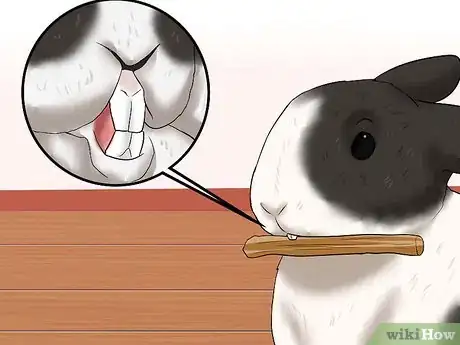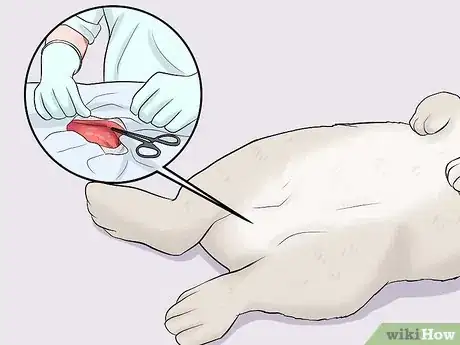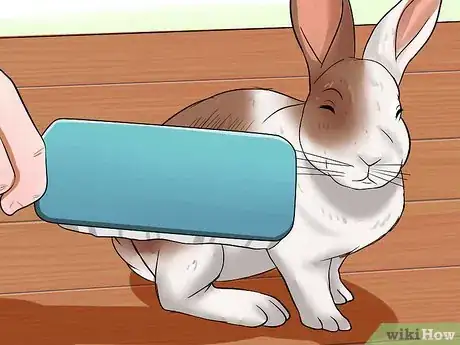This article was co-authored by Pippa Elliott, MRCVS. Dr. Elliott, BVMS, MRCVS is a veterinarian with over 30 years of experience in veterinary surgery and companion animal practice. She graduated from the University of Glasgow in 1987 with a degree in veterinary medicine and surgery. She has worked at the same animal clinic in her hometown for over 20 years.
There are 8 references cited in this article, which can be found at the bottom of the page.
wikiHow marks an article as reader-approved once it receives enough positive feedback. In this case, 90% of readers who voted found the article helpful, earning it our reader-approved status.
This article has been viewed 40,573 times.
New Zealand rabbits originated in the United States as a cross between a Belgian hare and a domestic white rabbit.[1] New Zealand rabbits are often white, but they also come in red, black, and mixed colors. These rabbits are the most popular breed for meat rabbits, but they also make great pets.[2] If you have a New Zealand rabbit, then you will need to make sure that he has the right type of food, housing, and other kinds of care to be healthy.
Steps
Feeding Your New Zealand Rabbit
-
1Give your New Zealand rabbit plenty of hay. Hay is a staple food for New Zealand rabbits. Hay provides the essential nutrients that your rabbit needs and it also helps to wear down her teeth, which never stop growing.[3] Make sure that your New Zealand rabbit always has access to an unlimited supply of fresh hay. Give her new fresh hay least once per day and check now and then to see if she needs more.
- Never give your New Zealand rabbit corn, or other grains or seeds. Just stick to hay.
- Timothy hay is a great choice as primary feed for your New Zealand rabbit.
-
2Offer your New Zealand rabbit some pellets. Plain pellets can also provide your New Zealand rabbit with some nutrition, but rabbits only need a small amount of pellets each day. Limit your rabbit’s pellet intake to about ¼ cup per day.
- For a bigger rabbit or for a rabbit that is not gaining weight properly, you may need to offer more than ¼ cup per day. Check with your veterinarian for a recommendation based on your rabbit’s size and other needs.[4]
Advertisement -
3Provide some dark leafy greens. Dark leafy greens also provide your rabbit with a good source of nutrients and your rabbit will enjoy nibbling on these. Try to give your New Zealand rabbit a couple pieces of dark leafy greens each day. Some dark, leafy greens that your rabbit may enjoy include:[5]
- basil
- cilantro
- collard greens
- parsley
- kale
- mustard greens
- turnip greens
-
4Let your New Zealand rabbit have a treat now and then. New Zealand rabbits like to chew on crunchy veggies, fruits, and seeds, so try to offer a crunchy treat once per day. Some good choices for your New Zealand rabbit include:[6]
- apple slices
- carrot slices
- hulled sunflower seeds
-
5Make sure that your New Zealand rabbit always has water. Your New Zealand rabbit always needs to have access to fresh, clean water. A sipper bottle is ideal for your rabbit because it will not spill or get dirt or feces in it like a water dish. That means that you won’t have to deal with a toppled dish of water or a dish that your rabbit has contaminated with feces.
- Make sure that you keep your rabbit’s water bottle full of fresh clean water at all times.[7]
- If you decide to use a water bowl, use a ceramic bowl and check it often.
-
6Feed your New Zealand rabbit some foods in small quantities. Some foods may cause your rabbit to bloat or build up gas, and should only be fed to it in small amounts. These kind of foods include:[8]
- broccoli
- brussel sprouts
- spinach
- cabbage
- cauliflower
Setting Up Your New Zealand Rabbit’s Cage
-
1Choose a cage for your New Zealand rabbit. New Zealand rabbits are medium size, and they need plenty of room to hop and play. Make sure that you provide your New Zealand rabbit with a cage that is at least 30 inches (76.2 cm) long by 24 inches wide by 18 inches (45.7 cm) high.[9]
- Do not get a wire bottom cage because these types of cages can hurt your rabbit’s feet. Choose a cage that has a solid metal bottom instead.
- Puppy playpens also work well as rabbit enclosures. A puppy playpen will give your New Zealand rabbit lots of space to hop around.
- You may also consider getting a special rabbit condo enclosure.[10] [11] These types of enclosures have lots of hiding places and tunnels for rabbits to explore and enjoy.
-
2Add a hiding place. Rabbits like to hide now and then to feel more secure. Try adding a cardboard box or a wooden nest box to your rabbit’s cage so that she can retreat if she feels nervous or frightened.[12]
- A cardboard box provides a nice hiding spot for your New Zealand rabbit and your rabbit can also move the box around and chew on it.
-
3Include a litter box. If you don’t want you New Zealand rabbit urinating and defecating all over the cage, then you can place a small litter box in the corner of your rabbit’s cage. Line the litter box with a few sheets of newspaper and then lay some hay over the newspaper. Dump out the contents of the box once per day and refill with new materials.[13]
- If your New Zealand rabbit is not using her litter box, then try moving the litter box to the corner that she is using as a toilet spot.
- Try placing a few litter boxes around your house so that your rabbit can use them as needed.
- Never use cedar or pine shavings in your rabbit’s litter box. These materials may cause your rabbit to develop respiratory and liver problems.
-
4Keep your New Zealand rabbit in your house. If you keep your rabbit outside, then she will be at risk of premature death for a variety of reasons. Rabbits do not do well outside because they are prone to overheating and hypothermia, they frighten easily, and they require companionship.
- Even if predators cannot gain access to your rabbit in her cage, she may have a heart attack from fear.
- A pet rabbit kept outside may develop antisocial behavior issues, such as aggression, so keeping a rabbit outside will make it into a poor pet.
Protecting Your New Zealand Rabbit’s Health
-
1Play with your New Zealand rabbit every day. To stay healthy, rabbits need lots of exercise. Make sure that your New Zealand rabbit gets at least two hours of exercise every day. To allow your rabbit to run and hop enough to get exercise, you will need to let her out of her cage to at least once per day.[14]
- Keep your rabbit indoors when you let her out to exercise. You may even want to keep her confined to one room. For example, you could keep her in your bedroom or put up a couple of baby gates to make sure she stays in a specific area of your house.
-
2Protect your New Zealand rabbit from electrical cords. New Zealand rabbits will chew on any cords they encounter. This can kill your rabbit and ruin your electronics, so it is important to stop your New Zealand rabbit from doing so.
- Try hiding electrical cords with some hard plastic tubing or spiral wrap. Another option is to just keep all of the cords off of the ground so that your rabbit cannot reach them.[15]
-
3Supervise your New Zealand rabbit well. Make sure that your rabbit does not chew on your walls and furniture. A New Zealand rabbit will chew on any wooden object. This may include wall trim, door edges, chairs, and table legs.
- Keep in mind that your New Zealand rabbit might also try to chew on other things such as a rug, some loose carpeting, or a bit of loose wallpaper.[16]
- If you catch your rabbit chewing on something that he should not be chewing on, don’t get mad or punish him. Just pick him up gently, move him somewhere else and provide him with a cardboard box or a piece of a raw carrot to distract him from the other object.
-
4Provide lots of things for your New Zealand rabbit to chew on. Your New Zealand rabbit’s teeth will never stop growing, so she needs to keep chewing on things to wear them down. Otherwise, your rabbit may need a visit to veterinarian to have her teeth trimmed. To avoid the need to trim your rabbit’s teeth, make sure that she has plenty of things to chew on at all times.[17]
- Try giving your New Zealand rabbit some alfalfa cubes, untreated pine boards, cotton towels, cardboard boxes, or apple branches.[18]
-
5Take your New Zealand rabbit to see a veterinarian. To keep your New Zealand rabbit healthy, you will need to take him to see a veterinarian once per year for a checkup. Watch for any problems that your rabbit is sick as well. If you rabbit seems sick, then take her to see your veterinarian. Signs that there might be a problem include:
- not hopping or not using back legs
- excess fur loss
- not defecating or having watery diarrhea
- dark red urine or no urine
- lethargy (extra tired, not moving or reacting normally)
- runny eyes and nose
- drooling
- fever of 105 °F (40.6 °C) or more
-
6Get your New Zealand rabbit spayed or neutered. Unless you plan to breed your New Zealand rabbit, you should get him or her neutered or spayed. Spaying and neutering your rabbits will prevent unwanted litters and it will also help to keep your rabbit healthy. If you do not spay or neuter your rabbit, then he or she may act out with hormonal behaviors, like fighting or spraying. If you have a female rabbit that is not spayed, then she will have a much higher risk of getting uterine cancer as well.[19]
- If your rabbits are not spayed and neutered, then make sure that you keep them separated.
-
7Groom your New Zealand rabbit as needed. Your New Zealand rabbit will benefit from a once weekly brushing session. Otherwise, you may end up with lots of hair on your furniture, carpet, and clothes. Use a natural bristle brush or a comb to go over her hair once per week.[20]
- Do not bathe your New Zealand rabbit. Rabbits can become hypothermic if they get wet and they do not enjoy the water either.
Warnings
- Support you rabbit’s bottom with one hand and cradle the rest of her body with your other hand. Never pick up a rabbit by its ears or with your hands around its chest because this can cause severe harm to the rabbit.⧼thumbs_response⧽
References
- ↑ http://rabbitbreeders.us/new-zealand-rabbits
- ↑ https://extension.psu.edu/rabbit-production
- ↑ http://www.spca.org/page.aspx?pid=430
- ↑ http://www.spca.org/page.aspx?pid=430
- ↑ http://www.spca.org/page.aspx?pid=430
- ↑ http://www.spca.org/page.aspx?pid=430
- ↑ http://www.spca.org/page.aspx?pid=430
- ↑ http://www.spca.org/page.aspx?pid=430
- ↑ https://www.animalhumanesociety.org/adoption/rabbit-care
- ↑ http://www.spca.org/page.aspx?pid=430
- ↑ http://myhouserabbit.com/rabbit-care/housing-your-pet-rabbit-indoors/
- ↑ http://www.spca.org/page.aspx?pid=430
- ↑ http://www.spca.org/page.aspx?pid=430
- ↑ https://www.animalhumanesociety.org/adoption/rabbit-care
- ↑ http://rabbit.org/faq-rabbit-proofing/
- ↑ http://rabbit.org/faq-rabbit-proofing/
- ↑ http://rabbit.org/faq-rabbit-proofing/
- ↑ http://rabbit.org/faq-chewing/
- ↑ http://www.spca.org/page.aspx?pid=430
- ↑ http://rabbit.org/faq-grooming/
About This Article
To care for New Zealand rabbits, provide access to an unlimited supply of hay and water and replenish it daily so it's always fresh. Since rabbits need about two hours of exercise per day to stay healthy, let yours out of its cage at least once a day so it can run and hop around indoors. You may want to confine it to one room or put up a couple of baby gates so it doesn't chew on your electrical cords, though! Also, be sure to provide lots of chewable items, such as alfalfa cubes, untreated pine boards, cotton towels, cardboard boxes, or apple branches, since a New Zealand rabbit’s teeth never stop growing! For tips from our Veterinary co-author on setting up your rabbit's cage, read on!
